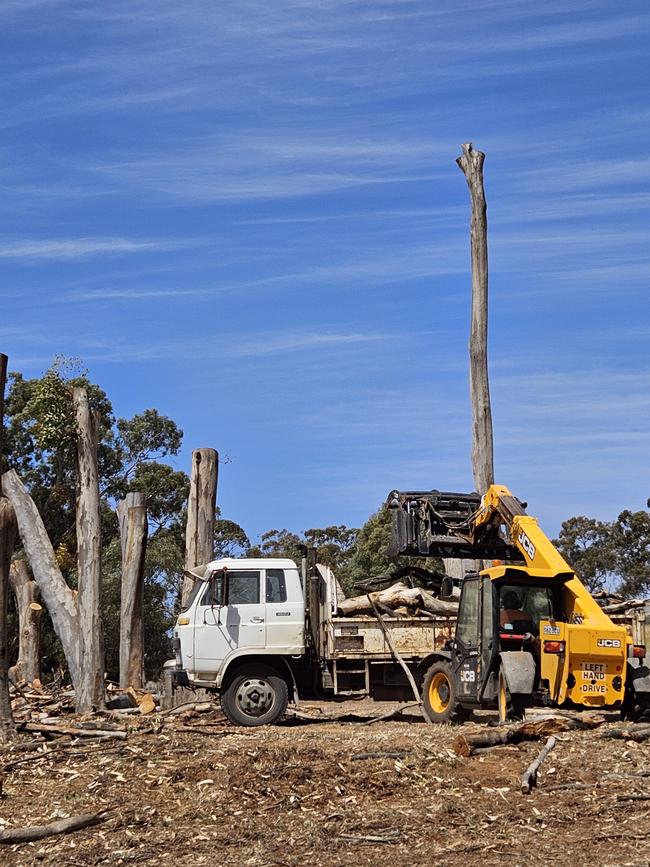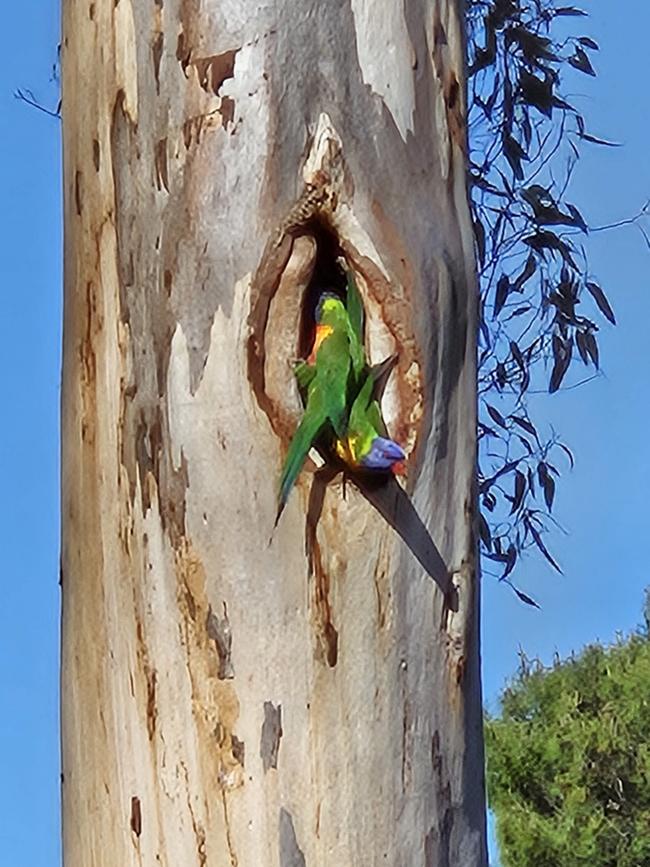Barossa locals split after 14 ‘dangerous’ sugar gum trees cut down at Greenock over safety fears, cricket nets relocation
The removal of 14 “dangerous” gum trees in a tiny Barossa town has split the community, but those behind the decision say there’s a simple reason it had to happen.
SA News
Don't miss out on the headlines from SA News. Followed categories will be added to My News.
Fourteen sugar gums felled at a regional park has “divided” a Barossa town, with some locals saying they weren’t given a chance to oppose the decision.
But the park committee says the trees had to go over fears for the safety of local cricketers.
Work started to bring down the 70-year-old gum trees at Greenock Centenary Park in early October to make way for new cricket nets.
The old nets are being removed to protect a 200-year-old river red gum, whose roots are being stifled by the concrete, and cricket players, who are at risk from its falling branches.
Trudi Robinson, a Greenock local for 23 years, said the nets could go elsewhere in the park – and the community was never officially consulted.
She said a petition had garnered about 1000 signatures against the trees’ removal, but no one knew the trees were being felled until work started.

Ms Robinson said the park committee had acted “very hastily” in removing the trees and they had been felled on a technicality – because sugar gums aren’t native to the Barossa.

“I am devastated,” she said. “I had no idea (the resolution) had been passed the week before, and was really shocked to hear chainsaws in the Greenock Park. To see those trees beginning to be felled was horrific.”
However, park committee president and local wine merchant Mick Schluter said no one had objected to the tree removal at the committee AGM.
The park committee has final say over the area’s management after it was given autonomy by Light Regional Council, and has managed the park for 30 years.
Mr Schluter highlighted an Advertiser report on Norwood residents who were begging their council to remove a 60-year-old sugar gum tree that had been dropping branches for more than a decade.
“The headline on that story is ‘Remove this tree before it kills us’, and we’ve got 14 of them in the park,” Mr Schluter said.
“This has been going for a long time – we’ve had a vote on it at council, we were backed 6-3.
“We’re moving the cricket nets away from a 200-year-old river red gum, which we can’t touch, you just trim.


“Those river reds drop random branches any time, and the cricket mums want their kids to be further away from them, so we’re moving the nets into the area with the sugar gums.”
Mr Schluter said the committee would “beautify” the area with a screen of new native vegetation, and would consider a bowling green and shed and camping area.
Ms Robinson said a petition against the trees’ removal had garnered about 1000 signatures, but no one knew it was about to happen and the trees had been wrongly described as dangerous.
Ms Robinson and other locals engaged an arborist when during a pause in felling works while two trees remained and said he was “horrified” by what he found.
His report found the risk posed by the trees was within acceptable levels, the trees should be retained and they should be protected by SA legislation.
The report recommended “action be taken against the parties involved in the illegal work completed” on the trees.
However, the report includes advice from the Native Vegetation Council that said the trees were likely planted, and therefore not protected by legislation.
Ms Robinson said the trees’ removal had caused division in the town of 3000 people.
“We are a close-knit community but it’s divided us, it’s really sad. Many people haven’t felt safe to talk about it, it’s too confrontational.
“I signed the petition knowing there was a proposal to remove the sugar gum trees … but I didn’t think it could happen. The reality was such a shock.”
Ms Robinson said the committee was “hard working” and respected the work it had done for the park in the past.


“My concern is there was no transparency, no communication and no community consultation. Those who became aware and raised concerns were dismissed,” she said. “This could have been done without removing the full extent of the trees.”
Light Council Mayor Bill O’Brien backed the park committee and said he appreciated the trees’ removal was an emotional issue for the town.
“Council has empowered the park committee to manage the facility – they’ve managed it for 30 years, they’ve done a wonderful job,” he said.
“Sugar gums are notorious for losing branches. I understand they’re planting three trees for every one they’ve removed with more appropriate species.”



